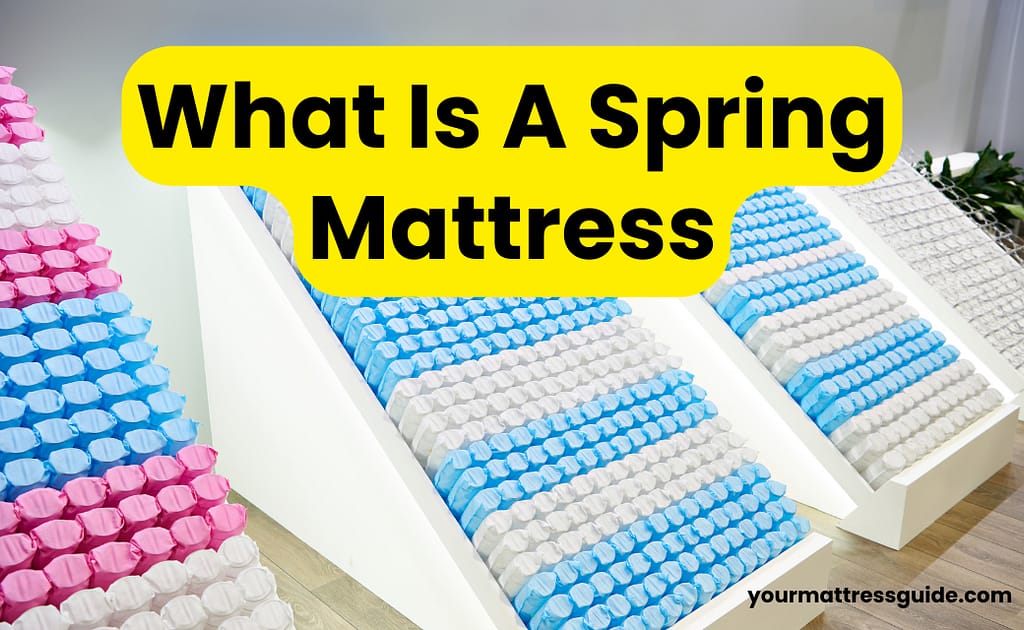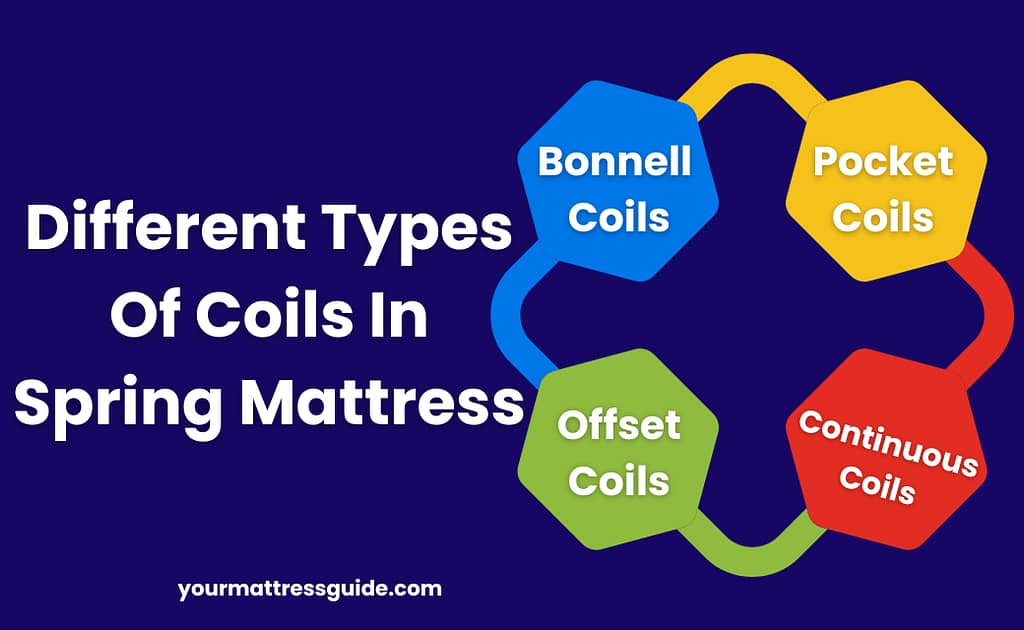There are numerous factors to take into account while selecting a mattress. Which type of mattress is better—memory foam or conventional spring mattress? In any case, what makes a difference? To determine which bed is the best, we’re dissecting everything in a battle royale today.
We all deserve to sleep soundly and wakefully at the end of the day. However, choosing the ideal mattress for your needs will rely on your particular demands and sleeping preferences.

What Is A Spring Mattress?
Steel or metal springs, sometimes known as coils, are the building blocks of a spring mattress, which is layered with additional materials to provide comfort and support. The four types of coils that offer different levels of support are continuous, Bonnel, offset, and pocket.
While you can wrap pocket coils independently, “innersprings” are typically joined. Despite being a more “traditional” mattress type, spring mattresses of today are very different from the ones that your grandparents slept on.
Additionally, this word is sometimes simultaneously pairs up with hybrid mattresses, which are just mattresses that combine foam and springs. Combining the strength of innerspring with the softness of memory foam, hybrid mattresses offer the best of both worlds.
Pros & Cons Of A Spring Mattress
You might think that innerspring mattresses are better, in contrast, if you’ve been lying on a memory foam or hybrid bed. Together, let’s investigate a few of the advantages listed below.
Pros:
- Spring mattresses require little time to break in.
- Continuously coil spring mattresses can be more affordable than other forms of mattresses.
- Because the coils enable air to move between them, spring mattresses offer a more excellent sleeping experience than other foam mattresses.
- The “sinking” and contouring feel of memory foam is contrasted with the bouncy and “responsive” feel of coils.
Cons:
- Particular all-spring mattresses must be transported to your home by truck or placed on top of a vehicle, unlike memory foam mattresses, which may be sealed by vacuum and delivered in a small box. This implies that delivery personnel will probably have to enter your house.
- Without appropriate comfort layers, the pressure exerted by coils, particularly those linked or innerspring, could worsen existing discomfort rather than provide relief.
- Spring mattresses often have a lower lifespan and warranty than memory foam mattresses.
- A typical spring mattress requires frequent flipping to stay in good condition. Some people may find this problematic because flipping is more physically demanding than merely spinning and may require extra assistance.
- When you share a bed, spring mattresses convey motion to your spouse.
What Are The Different Types Of Spring/Coils?
Bonnell Coils:
Originally utilized in the earliest spring mattresses, Bonnell coils are still in use today by some manufacturers. Depending on the wire gauge, they can be created to be firm or soft and have an hourglass form. Bonnell coils are easy to use and reasonably priced, which is why many mattresses use them.
Pocket Coils:
The pocket coil design, or pocketed coils, consists of individual metal coils encased in fabric sleeves. This reduces noise and enables one coil to rotate independently of the others. Higher-end beds frequently have pocketed coils, which are more costly to manufacture. They relieve specific pressure points and generally give off a more buoyant feeling.
Offset Coils:
Although hinged wires connect offset coils, they have several characteristics in common with pocket coils. As a result, the coils can flex under light strain and offer robust support when required. Many coil beds with firmness ratings over seven out of ten will have some offset coil since they offer more stiffness than pocketed coils. Offset coils are only sometimes utilized for applications other than this one.
Continuous Coils:
A complete row of “coils” is built from a single wire in a continuous coil design. Then, spiral cables join each of these rows to the next. Although this design offers a firm support structure, continuous coils have significantly less ability because every element is connected.

How Long Does Spring Mattress Last?
The average spring mattress lasts five to ten years. On the other hand, how well you take care of your mattress and its general construction may determine this.
Generally speaking, some parts of your body will start to sag and bend after years of pressure from your body on the springs. The coils on higher-quality spring beds are often thicker and may last longer.
To help absorb pressure, you should also be sure that your mattress has a sturdy foundation. Additionally, we advise routinely turning the mattress—roughly every three months.
What makes a spring mattress superior to a foam mattress, then? There are several advantages to memory foam mattresses, even though some people prefer the springy, bouncy feel of coil beds. That will be covered in the following section.
Which Is Better? Memory Foam Or Spring Mattress?
Ultimately, selecting the ideal bed for you entails far more consideration than simply deciding between foam and spring. Ultimately, it comes down to selecting the appropriate mattress model because excellent, supportive, and comfy mattresses are available.
That being said, there are a few final points to think about.
Most folks will find satisfaction in a premium foam mattress. Foam strikes a fantastic compromise by feeling soft and pleasant and fitting in a supportive, pressure-relieving way. Foam mattresses are especially popular with side sleepers because they often fit their bodies better.
Those who tend to overheat at night should consider a spring mattress. Much better ventilation is provided by innerspring beds, which keeps the bed cooler at night.
Heavy or stomach-sleeping sleepers should choose innerspring, hybrid, or substantial foam beds to ensure adequate support. Softer foam types will sink too much for these sleepers to be comfortable.
Today, most internet mattress sellers provide free trial periods during which you may evaluate the bed for a few months. This flexibility might provide you some peace of mind during the buying process if you’re not convinced about a mattress.
Conclusion:
If you genuinely adore springs, we suggest a hybrid mattress that offers the finest of both worlds!
Whichever type you end up with, you should search for the following:
- Mattresses constructed from premium, long-lasting materials
- A strong guarantee, such as the industry-best 20–25-year limited warranty offered by GhostBed
- Simple matching to safeguard your investment with a flexible base or a strong foundation
- A lengthy trial period (such as the 101-Night Sleep Trial offered by GhostBed)
We hope your search for the perfect mattress is fruitful and prosperous. Furthermore, we hope that this information clarifies your possibilities!
FAQs
Which type should I get if I have hip pain?
Because spring mattresses impose additional strain on already sore joints, they are not a good option for people with hip discomfort. However, if coils appeal to you or you’re accustomed to them, consider getting a hybrid mattress.
What type of mattresses needs a box spring?
Is a box spring necessary for your mattress? Previously, a box spring was necessary for conventional innerspring mattresses. However, the developments in foam, latex, and hybrid mattresses are becoming less significant.
Remember that regardless of the type of bed you choose—all-foam, latex, or hybrid—you need to spend money on mattress support, such as an adjustable base or metal foundation.
What Is A Spring Mattress Good For?
The most common kind of mattress is the spring mattress, sometimes called an innerspring mattress. They work well for people with lower back pain and sleep on their backs. They are also an excellent choice for people who discover that foam mattresses don’t provide them with the necessary support.


